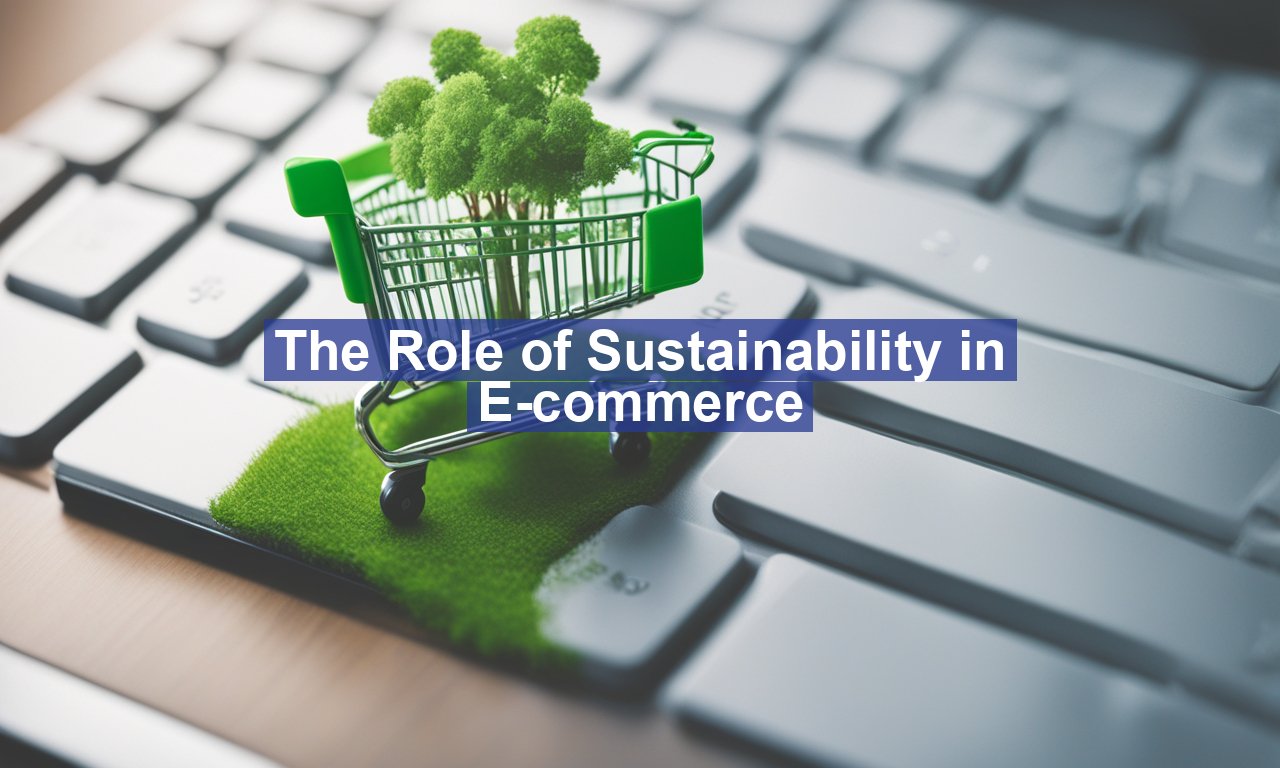The role of sustainability in E-commerce in an age where digital shopping carts are filling up faster than ever, the spotlight is now on how e-commerce businesses can thrive without leaving a hefty carbon footprint. The Internet is flooded with packages, but the ecological cost of shipping and handling is a growing concern. So, how can the digital marketplace evolve to become more planet-friendly?
This post will take you on a journey through the sustainable practices being adopted by e-commerce giants and small businesses alike, detailing why these methods matter not just for our planet, but for the business’s bottom line.
The Environmental Impact of E-commerce
Before delving into sustainable solutions, it’s indispensable to understand the scale of the problem. An e-commerce transaction seems simple on the surface, but the underlying logistics involve complex supply chains that include manufacturing, packaging, and shipping, all of which contribute significantly to environmental pollution.
- Carbon Emissions: From product warehouses to delivery trucks, carbon dioxide is emitted at every stage of the e-commerce process, contributing to climate change.
- Packaging Waste: The demand for durable packaging often leads to excessive use of materials like plastics and cardboard, exacerbating waste problems.
- Resource Consumption: The energy required to run vast server farms and maintain websites adds another layer of environmental strain.
For businesses, addressing these issues isn’t just about corporate social responsibility; it’s a growing consumer demand. According to a report by Nielsen, nearly 74% of consumers say they would change their consumption habits to reduce their impact on the environment.
Implementing The Role of Sustainability in E-commerce
Eco-Friendly Packaging
One immediate area where e-commerce businesses can make a difference is packaging. Switching to biodegradable, compostable, or recyclable materials can substantially reduce waste. Some companies are also experimenting with ‘returnable packaging’, which can be sent back, cleaned, and reused.
For instance, Amazon’s “Frustration-Free Packaging” initiative minimizes packaging materials, which reduces waste and has the added benefit of enhancing customer satisfaction. This approach not only makes good environmental sense but also builds brand loyalty.
Green Supply Chains
Optimizing the supply chain can drastically cut down on resource use and emissions. This involves everything from choosing eco-friendly suppliers to optimizing delivery routes and reducing return rates through better product descriptions and sizing guides.
Some businesses are developing partnerships with logistic companies that use electric vehicles or have invested in sustainability. By supporting a greener transport network, companies can further their commitment to environmentally-responsible practices.
Energy Efficiency
From the warehouses to the digital servers, energy efficiency plays a crucial role in sustainability efforts:
- Data Centers: These are crucial lifelines for any e-commerce business and are notorious energy guzzlers. Companies like Google are investing in renewable energy for their data operations to reduce their carbon footprint significantly.
- Warehousing: Employing energy-efficient machinery, lighting, and temperature control systems in warehouses further aids in reducing overall energy consumption.
The shift to renewable energy sources and increased efficiency not only reduces costs but also aligns with many consumers who prefer eco-conscious businesses.
The Business Benefits of Going Green
Adopting sustainable practices does not exclusively benefit the environment; it has a substantial business upside too:
- Cost Savings: Reducing waste and improving energy efficiency often results in significant cost savings.
- Enhanced Brand Loyalty: Consumers are increasingly choosing brands that prioritize sustainability, offering a distinct competitive advantage.
- Regulatory Compliance: As governments step up efforts to impose stricter environmental regulations, businesses adopting sustainable practices now are well-positioned for future compliance.
Moreover, a commitment to sustainability can enhance a company’s reputation and enable it to attract talent who are passionate about working for environmentally-conscious businesses.
Challenges and How to Overcome Them
While the incentives are high, implementing sustainable processes in e-commerce comes with its own set of challenges:
Initial Investment Costs
The initial cost of transitioning to eco-friendly materials or renewable energy can be daunting for smaller businesses. However, grants and tax incentives from government bodies can provide much-needed support.
Supply Chain Complexity
Greening a supply chain requires coordination across multiple suppliers and partners, each with their own set of practices and standards. Businesses can overcome this by focusing on long-term partnerships with suppliers who share a commitment to sustainability. Using guidelines and resources can streamline this process.
It’s clear that sustainability in e-commerce is not just an optional add-on but a pressing necessity. As more consumers become environmentally conscious, the demand for greener, more sustainable commerce continues to rise. By making a concerted effort towards sustainability, e-commerce platforms can not only contribute to environmental conservation but also harness long-term business benefits, paving the way for a new era of responsible digital retail.


